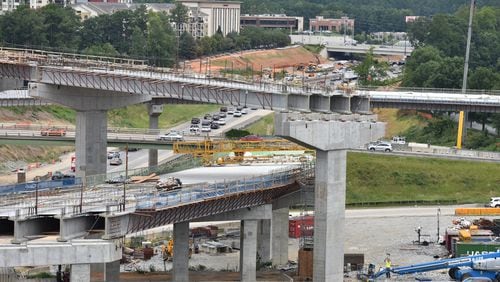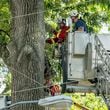The state plans to sell $1.1 billion in construction bonds in a few weeks — much of it for schools and college buildings — and a key service said Georgia has again retained its AAA bond rating that allows it to save millions of dollars a year in interest payments.
The AAA bond rating is the gold standards for governments looking to borrow to build schools and roads because it allows governments to borrow at relatively low interest rates.
A legislative session doesn’t go by without House and Senate budget chairmen and the governor bragging about the state’s top bond rating.
Fitch Ratings on Monday affirmed the rating for the latest borrowing, saying it “reflects the state’s proven willingness and ability to maintain fiscal balance and a broad-based, growth-oriented economy that supports revenue growth over time.”
Georgia has maintained its AAA rating from the major bond rating services for decades.
Earlier this year, the state auditor said Georgia’s AAA bond rating could be in jeopardy because he hadn’t received complete financial data from the state Department of Labor, which was hit with an avalanche of unemployment claims last year when the COVID-19 pandemic hit.
State senators raised the issue in February with state Labor Commissioner Mark Butler, who told them Auditor Greg Griffin’s office made an end-of-the-year request for information on several hundred thousand unemployment cases.
Griffin sent Butler a letter in January saying his office couldn’t complete the state’s annual Comprehensive Annual Financial Report without information it was waiting on from the Department of Labor. The reports are usually completed by Dec. 31.
The missing information, Griffin said, included some files on unemployment payments, cases of overpayments, fraud inquiries and appeals of the department’s initial decision to turn down claims. Not being able to provide a full accounting, he said, could cause the bond rating to slip.
In the end, it didn’t matter, with Fitch giving the state high marks for its fiscal handling of the COVID-19 recession and its generally conservative budgeting and spending.
In its report, the rating outfit noted that state tax revenue is up more than 13% for the first 10 months of the fiscal year, which ends June 30, and the state is expecting a hefty surplus. The state is also just beginning to figure out how to spend about $4.8 billion in federal COVID-19 relief funds it started to receive last week.
The bonds being sold next month are for projects the General Assembly approved in March.
Besides the usual assortment of k-12, college and technical school buildings and library additions, the state will borrow almost $27 million for an aviation training academy in Dallas and almost $9 million on technical college commercial truck driving facilities and diesel and technology programs in Atlanta and Lithonia.
An additional $56.4 million would go toward replacing the Georgia State Patrol’s Atlanta headquarters, which was built in the 1950s.
Lawmakers approved $21 million more to go toward a new conference center and hotel at Lake Lanier Island.
And $90 million will go to expand the convention center in Savannah, on top of $94 million that lawmakers have agreed to borrow since 2017.
Ground was broken in March on the project, which is scheduled to be completed in 2023.
About the Author








